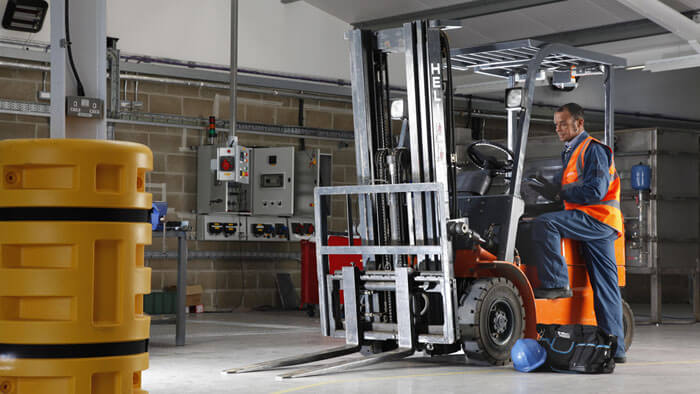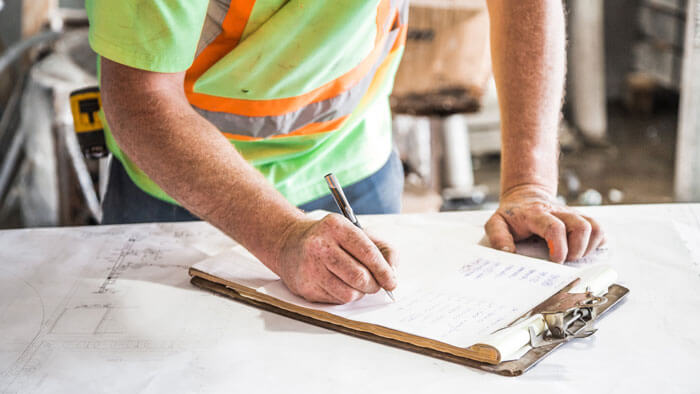Workplace Inspections – What about the Racking?
Jun 18, 2019 Racking Inspections, Workplace InspectionsWhen conducting workplace inspections, either from the perspective of a worker member on a JHSC or as a supervisor, our eyes are always brought to things out of place. It could be a tripping hazard standing out, an employee not following procedure, or a piece of equipment leaking oil. However, what about the constants in our working environment? The racking systems that store and organize products and material frequently become part of the scenery – and therefore not given the attention they deserve. They hold the goods and raw materials that drive the business – the backbone of warehousing and manufacturing organizations. So are they treated with the same level of care and consideration as something like a forklift? Not always, and let us take a few minutes to try to change that mindset.

Firstly we have to consider the legal obligations under the OHSA. It is stated that “An employer shall ensure that, the equipment, materials and protective devices provided by the employer are maintained in good condition” (S. 25 (1)(b)). So as part of the Internal Responsibility System, it is required to be kept in proper working order. Ontario Regulation 851 S. 45 (b)(c) governing material handling and storage states that in no uncertain terms, can items tip, collapse, fall. A Worker has to be able to remove items without endangering anyone.
The question then comes to mind, well, who decides what is acceptable and was is not when in terms of set up, modification, and repair? The Answer – The Pre-Start Health and Safety Review (PSR). If you are unfamiliar with this term, it is described in Ontario Regulation 851 S.7. Before any racking system is being used in the workplace, it needs to have documentation and drawings describing how it complies with the regulations, the details of the testing done to ensure structural integrity, the credentials of the author (usually a professional engineer). If your organization does not have a PSR readily accessible for the JHSC or a Ministry of Labour Inspector, it might be something to consider. It will show what the acceptable changes or modifications that are permissible without interfering with capacity. Whether an organization is installing new or used racking, it is essential to follow the engineer’s design and the manufacturer’s written instructions.
Now with a PSR setting the foundation for how it should be used and look – it can be used as a basis for the racking inspection. Racking should be inspected periodically for damage and unauthorized modification. Things to look for include: a twist, sheer, or dent in the upright, a missing safety clip, a dislodged or a split in the beam, a crack or split in a weld, corrosion, overloading, or a proximity hazard to name a few. Once an abnormality is found, not only can be addressed directly – but the cause can also be identified. An example could be bent uprights from an impact by a forklift operator. Operator error plays a role, but perhaps the workplace layout should also be examined. Distance between racks should give clearance for the model of the forklift to safely position for loading and unloading. If beams are frequently dislodged, an underlying issue of load height might need to be addressed. Baseplate lifting? Check how the load is balanced on the opposing side of the rack.
With so many variables and possibilities respecting the potential hazards with racking, prevention is the best (and usually cheapest) course of action. To ensure that all of these issues are corrected as soon as possible, they have to be reported. We all know a forklift operator should report a collision with a rack, but do they? If I were a supervisor and saw a scratch or scuff appear of the back of a forklift, I would certainly be curious about what else in the facility has a new bit of forklift paint on it – but is it investigated? The answer to bypass both of these issues is an inspection.
An inspection is going out with the conscious focus to look for actual and potential hazards in the workplace. The JHSC and Supervisors are responsible in their roles to conduct these, but had they considered including racking as part of it? Well after reading this – hopefully, yes. Review your PSR to understand how it should be used and what it should look like; deviations will stand out. Document damage and investigate how it happened, but make sure the root cause is identified. Train your workers how to spot damage, and about the risk of ignoring it. Ever wonder why YouTube has so many great examples of racking collapses? Let us not have our organizations contribute to that online content.
Geoff Rowatt | CHRP | Safety Trainer



